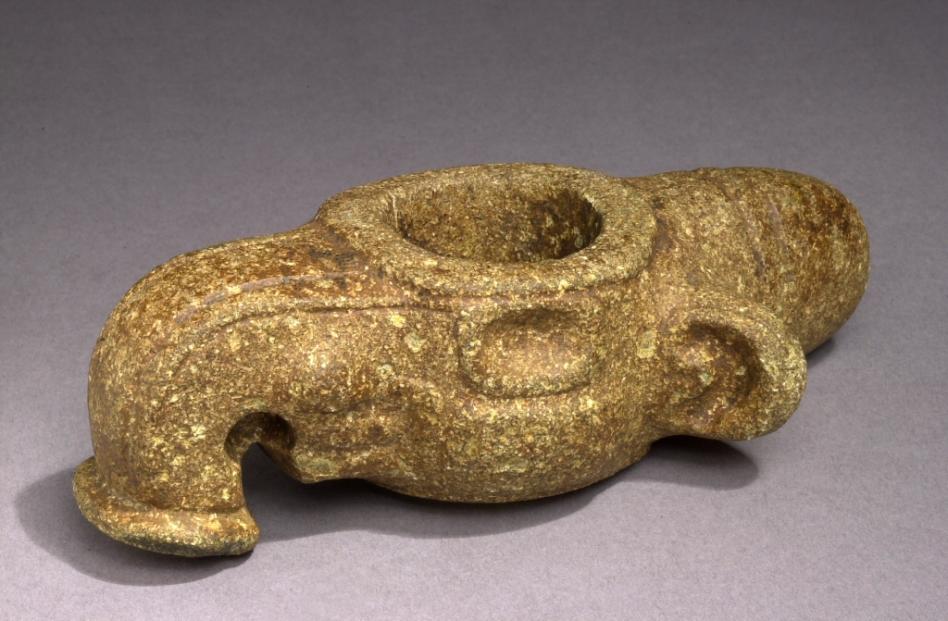
Object Title
Tapir Mace Head
Measurements
1 5/8" x 3 1/8" x 5 5/8"
Creation Date
1 - 500 CE
Credit Line
Gift of the Collection of Frederick and Jan Mayer
Museum Name
Museum Contact
provenance@denverartmuseum.org
Culture
Country of Origin
Object Type
Materials / Techniques
Museum's Definition of Antiquity
Before 1550
Provenance Information
Howard Bruce Greene (Primitive Arts, Inc.), Ft. Lauderdale, FL; Purchase Frederick R. [1928-2007] and Jan Mayer, Denver, CO, September 1975 [1]; Gifted to the Denver Art Museum, 2017
[1] On loan to the Denver Art Museum, 1993
[1] On loan to the Denver Art Museum, 1993
Exhibition Information
Clara A. Hatton Gallery, Colorado State University, Fort Collins, CO, Pre-Columbian Art from Costa Rica from the Collection of Jan and Frederick R. Mayer, 1977 (traveled to: Maxwell Museum, Albuquerque, NM, October 12, 1977 - May 30, 1978).
Publication Information
Stroessner, Robert J. Pre-Columbian Art from Costa Rica: From the Collection of Jan and Frederick R. Mayer. Exhibit at the Clara A. Hatton Gallery. Art Department, Colorado State University, Fort Collins, CO. 1977.
Section of the AAMD Guidelines relied upon for the exception to 1970
Gift or bequest expected or on loan prior to 2008
Explain why the object fits the exception set forth above
The Mayer collection of Costa Rican art distinguishes itself from other national and international collections for the depth and breadth of cultural and artistic styles represented therein. Assembled beginning in 1966, the objects represent the developmental arc of Costa Rican ceramics, metallurgy and stone carving and stands as the most comprehensive collection of Central American material culture outside of the region. Mr. and Mrs. Mayer began lending works in this gift to the Denver Art Museum in 1992 and since loan of this work in 1993, it has been on continuous display until 2017 in the Art of the Ancient Americas galleries. This gift complements the collection of Costa Rican material, also gifted by Mr. and Mrs. Mayer with the express purpose that the objects remain together in order for scholars to appreciate fully the development of Central American art, allow work to be put in the public domain, and facilitate further research.